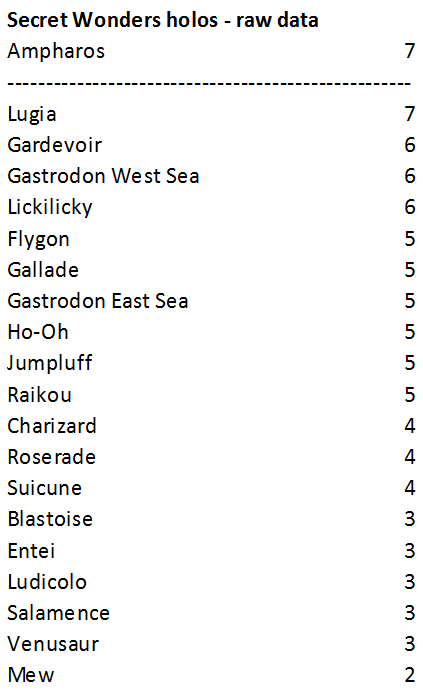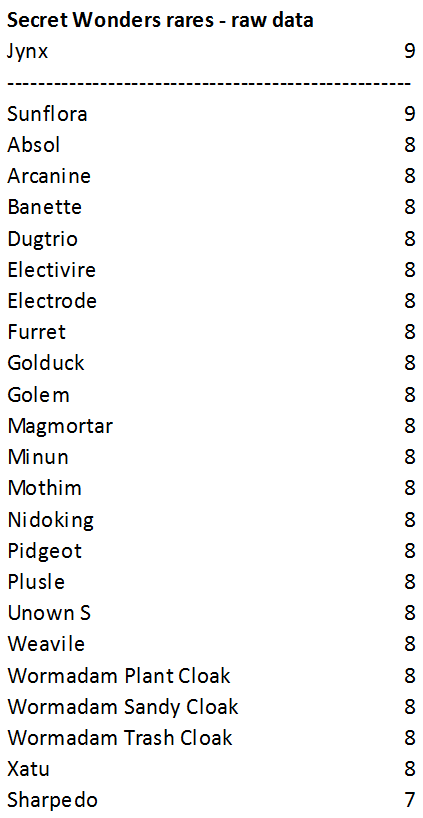Secret Wonders
The two questions of interest for this set are the rarity of the Pokémon LV.X - since there are only two in the set, their pull rate is less than one per box - and the sheet layout for the reverses; since there are 130 of them, they will have required at least two sheets to print them.
My Youtube sample of 8 boxes yielded 4 Pokémon LV.X. I would guess they are either 1 in 2 boxes or 2 in 3 boxes. I will go with 1 in 2 for my model, since it best fits the observed data, even if 2 in 3 would meen the pull rate for the individual cards would be the same as for the Pokémon LV.X in the previous two sets.
The question of the reverses is a bit more complicated. The only sets so far to have used more than one sheet to print the reverses were the three e-series sets. As mentioned in the respective posts on this thread, it looks like Expedition and Aquapolis used three sheets and Skyridge used four. By printing 2-3 copies of each reverse, the pull rates of the individual cards were more balanced than if 1-2 copies had been printed on two sheets.
From a Youtube sub-sample of four boxes, it is apparent that those reverses which appear fewer times on the sheet are reverse commons. It is however not possible to tell from the sample data if two or three sheets were used to print them, as printing most the reverses twice and 18 reverse commons once on two sheets, or printing most of the reverses three times and 27 reverse commons twice on three sheets would yield the exact same share of reverse rare holos, rares, uncommons and commons (see table below):
In order to determine which option - two sheets or three sheets - was most likely used, the best way is to look at the reverses in Legends Awakened, the next “large” set to require more than one sheet to print them. For Legends Awakened, it is also apparently some or all reverse commons which are printed fewer times on the sheets. If two sheets were used, 36 of the 48 reverse commons would only be printed once, the other reverses twice. If three sheets were used, all 48 commons and 4 other cards - I am hypothetically assuming they are reverse uncommons - would be printed twice, the other reverses three times. The table below shows that the first option - 2 sheets - fits somewhat better:
As a final piece of evidence, while developing this method of analyzing the reverses I have already looked at two later “large” sets: Boundaries Crossed, and BREAKThrough, which both also seem to have used two and not three sheets.
Thus, assuming 1 Pokémon LV.X in 2 boxes and the reverses printed on two sheets, the rarity table looks as follows:
The raw data for the holos, rares and Pokémon LV.X is as follows (dashed lines indicating where transition from H6 to H5, etc., would occur):





